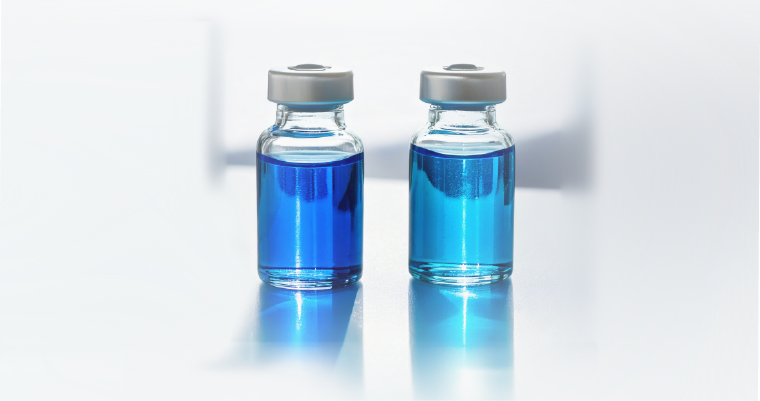
Capturing savings from biosimilars: What to do now
By Alliant Employee Benefits / March 18, 2025
If you haven’t yet had a talk with your pharmacy benefit manager (PBM) about biosimilar drugs, now’s the time.
That’s because, in theory, biosimilars can help mitigate one of the biggest drivers of rising healthcare costs: biologic drugs. Like generics for traditional drugs, biosimilars offer the same therapeutic benefits as brand-name biologics, but they cost an average of 40% less. The U.S. Food and Drug Administration (FDA) has approved nearly 70 biosimilar drugs to-date.
Before employers can fully realize these savings, though, they need to adjust their benefit plan design and scrutinize their PBM contracts.
Biologic drugs — produced by cultures of living cells rather than chemical reactions — offer targeted therapies that can be quite effective with minimal side effects. They are also often astonishingly expensive. In 2023, biologics accounted for more than half of the $435 billion spent on drugs in the United States, despite representing about 2% of prescriptions. And spending on biologics is growing at twice the rate of conventional drugs.
Biosimilars offer some financial hope. When biologic patents expire, other companies can introduce lower-cost alternatives, similar to generics for traditional brand-name medications. These copies of biologic drugs are called biosimilars because they aren’t exact copies, but instead are “biologically similar” to the original. Accordingly, they will require clinical trials to prove that they’re as effective as the brand-name equivalent.
The makers of the originals have been aggressive — even by pharma standards — in trying to prevent or at least delay the introduction of these rivals. However, more biosimilar drugs are entering the market. Among the most significant are alternatives to AbbVie’s Humira (adalimumab), which treats rheumatoid arthritis and other inflammatory conditions. With an annual list price of $90,000, Humira was the world’s highest-grossing drug in 2022, bringing in $21 billion. The following year, several biosimilar versions were introduced, and by 2024, sales of the original had fallen by 58%. (AbbVie is now promoting two new biologics, Skyrizi and Rinvoq, that it says perform better than Humira — and carry an even higher price.)
Over the next year, biosimilars are set to become more widely available for other prominent drugs, including Stelara, which treats autoimmune conditions, and Prolia, which helps osteoporosis.
Here’s what employers can do to maximize savings from biosimilars.
Encourage their use
- Ensure that your PBM’s formulary includes available biosimilars and will adopt new ones as they are introduced. This should be based on which product offers the lowest net cost to the member and plan.
- Exclude coverage for name-brand versions or create a tier that includes them but with significantly higher copays.
- Clarify how your plan will handle biosimilars not designated by the FDA as “interchangeable,” meaning that pharmacists (in most states) can substitute them for brand-name biologics. FDA-approved biosimilars have the same effect as the brand-name drug, and those designated as “interchangeable” have additionally proven to have no harmful effects when swapped for an original. You might also ensure that your PBM has procedures to encourage doctors to prescribe biosimilars that haven’t yet been classified as interchangeable.
- Proactively explain to members who started taking a brand-name version before a biosimilar was available that there should be no adverse impact from switching to the biosimilar. Some plans allow such members to continue taking the original drug, but we have found that there are few objections if the communication about biosimilars is straightforward and free from pressure.
Adjust your PBM contract
- Decide the pricing model you want for biosimilars. For example, many PBMs offer access to two versions of adalimumab biosimilars, with different economics: One, similar to most brand-name drugs, has a high list price combined with a rebate from the drug maker that should get passed from the PBM to the employer. The other, like generics, has a lower up-front price and no rebate. In general, the latter approach is more straightforward and cost-effective, although a few companies have internal accounting reasons to prefer the rebate model.
- Scrutinize your contract wording around “rebate credit.” PBMs may use these provisions to reduce your rebate payments if members switch from high-rebate biologics to no-rebate biosimilars.
- Demand that PBMs be fully transparent about the rebates they receive and return back to you. Otherwise, you won’t be able to compare competing bids accurately.
- CVS/Caremark, Express Scripts and OptumRx have all formed joint ventures to manufacture private-label biosimilar drugs. Ensure that your contract specifies that the formulary includes low-cost biosimilars from companies unaffiliated with the PBM.
While these steps may seem complex, the potential savings from biosimilars can be substantial, even if they only apply to a relatively small number of prescriptions. For example, we have one client with 350 employees, half a dozen of whom take Humira. Switching them to biosimilars will reduce the company’s overall healthcare costs by more than 10%.
How Alliant can help
Alliant’s Pharmacy team is made up of industry experts, pharmacists, and data specialists who provide marketplace perspective and insights, vendor capabilities, and practical knowledge to secure the best pricing and contract arrangements. Our buying power and partnerships enable us to support your benefits strategy, pharmacy program, and cost management throughout the entire program lifecycle. Get in touch with an experienced employee benefits consultant today to learn more.
Disclaimer: This document is designed to provide general information and guidance. This document is provided on an “as is” basis without any warranty of any kind. Alliant Insurance Services disclaims any liability for any loss or damage from reliance on this document.
Related News & Resources




